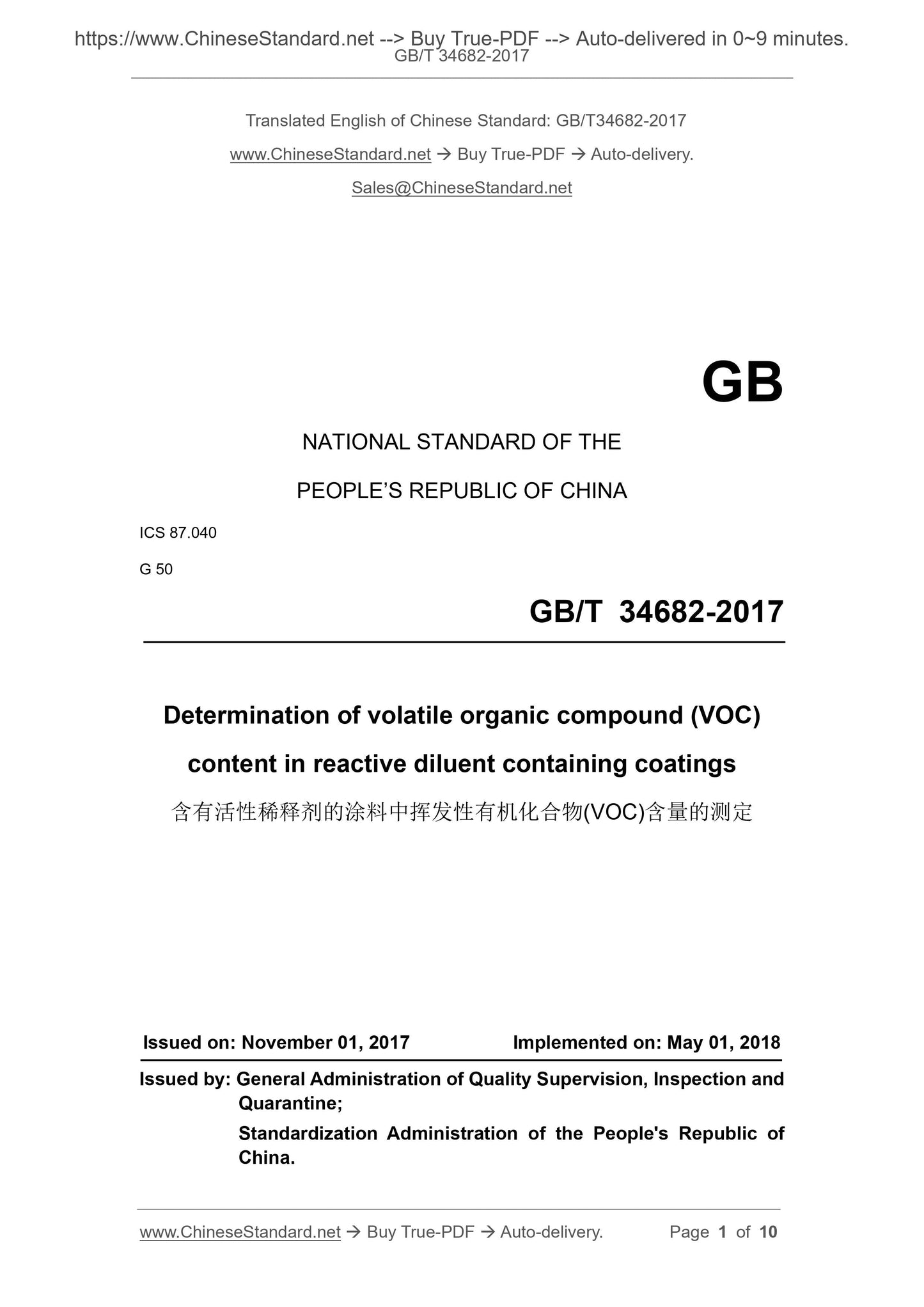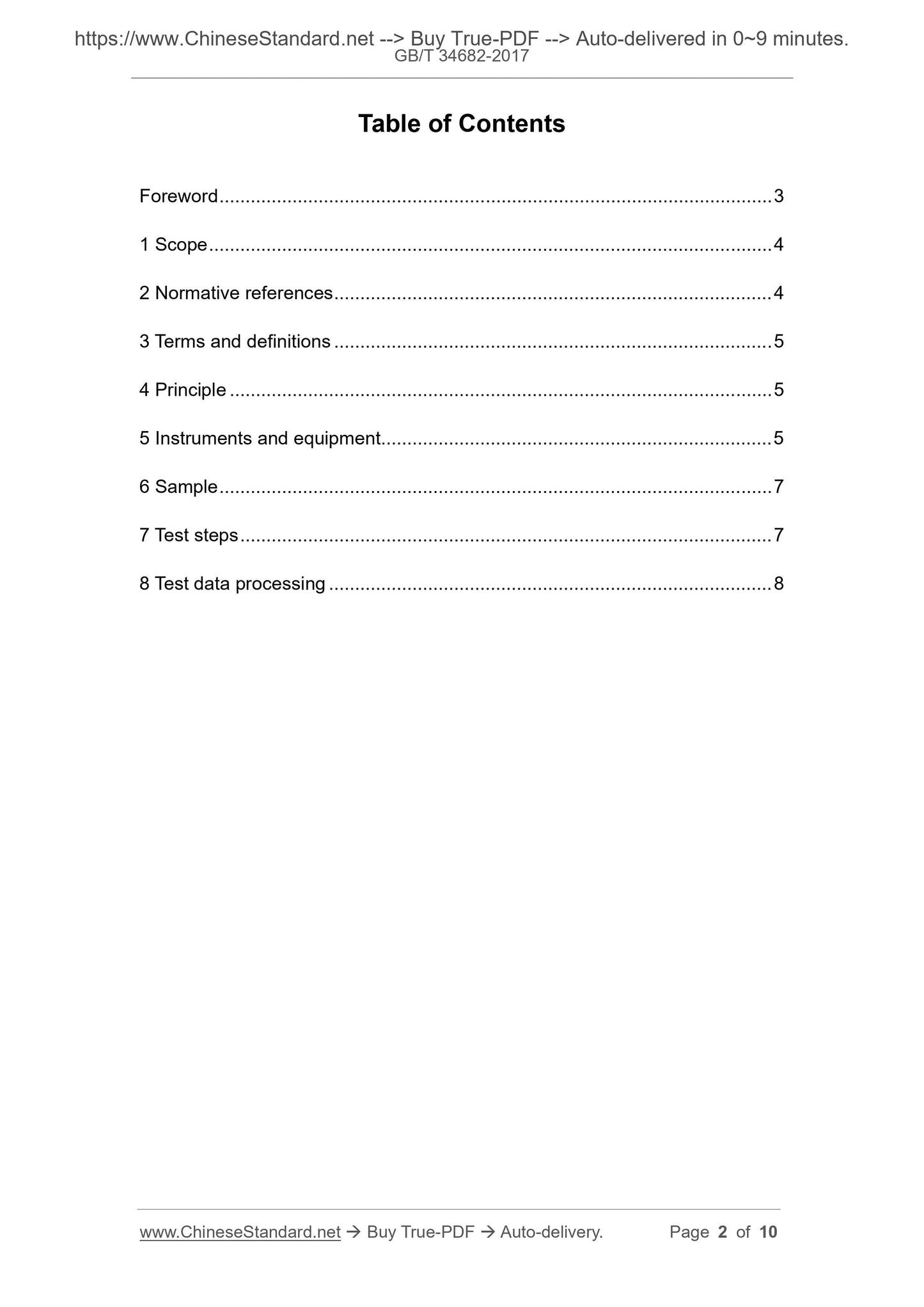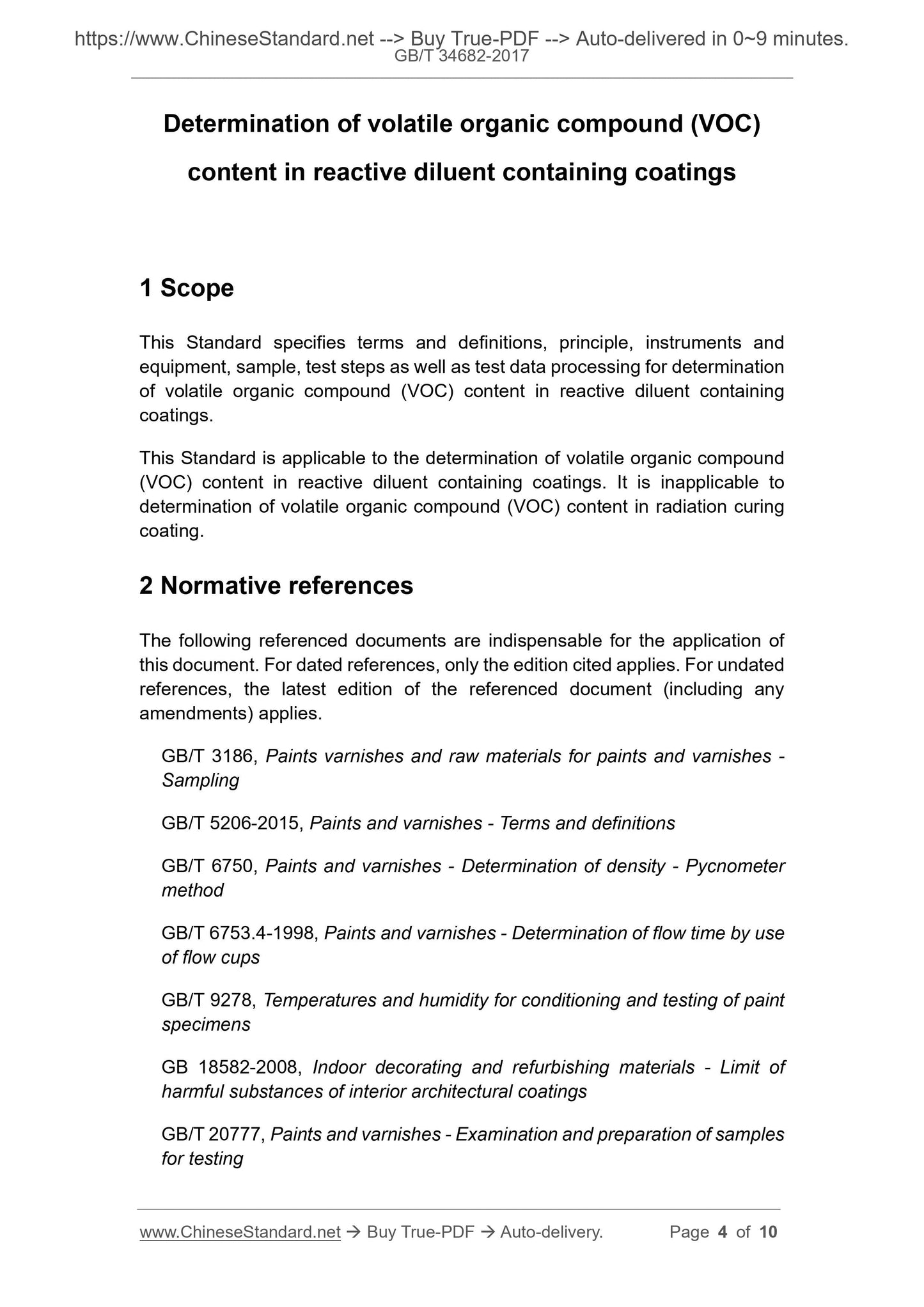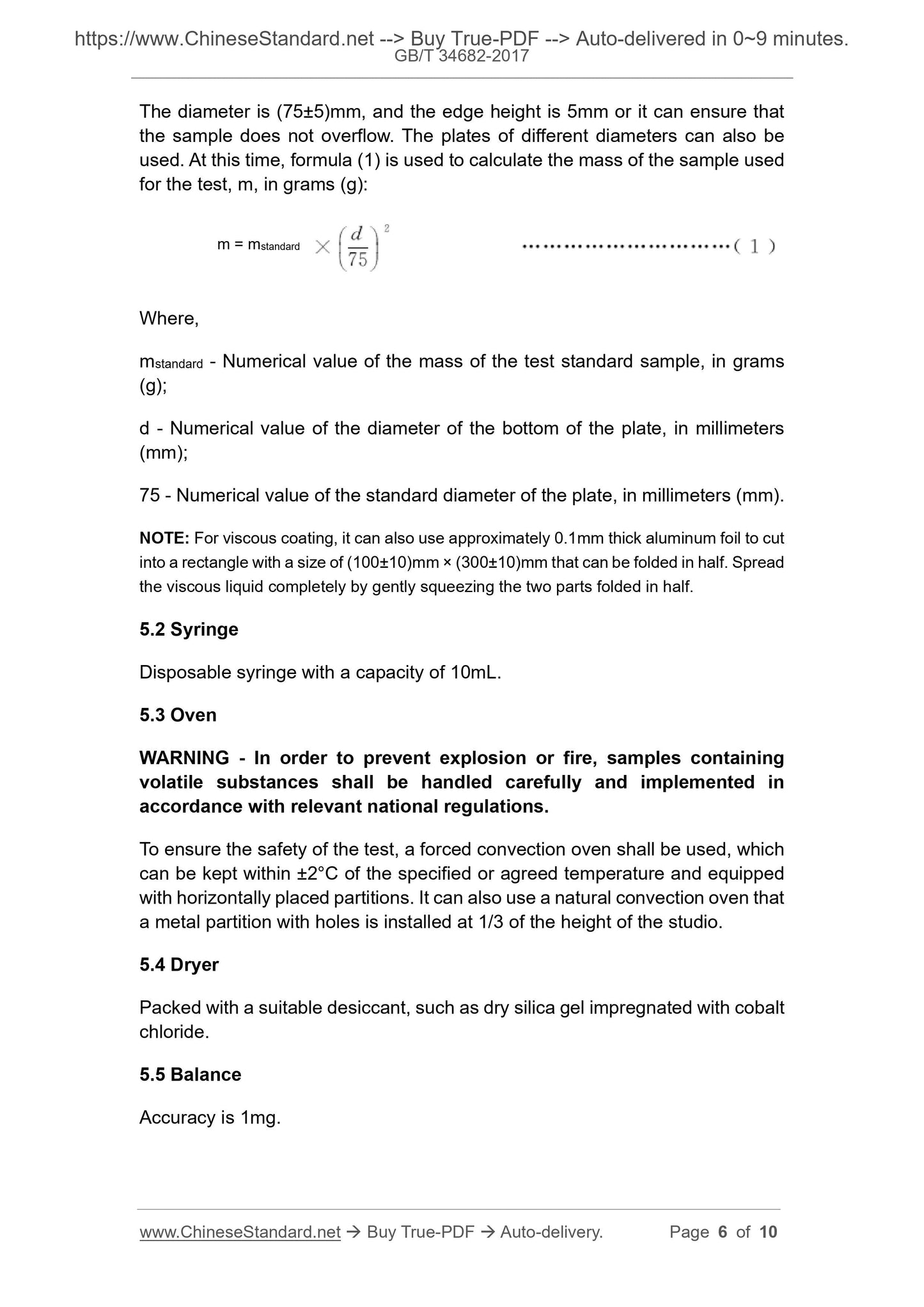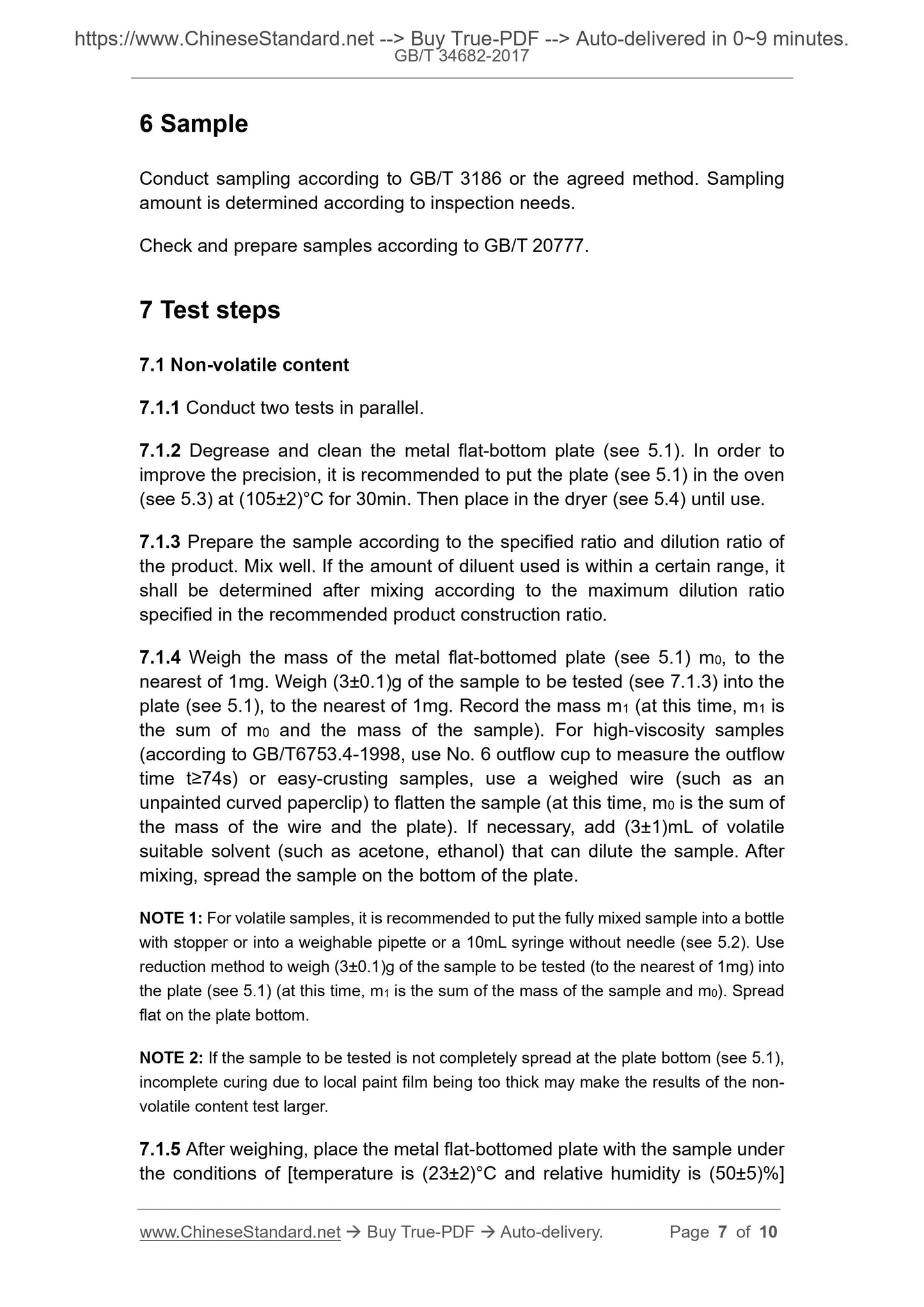1
/
of
5
www.ChineseStandard.us -- Field Test Asia Pte. Ltd.
GB/T 34682-2017 English PDF (GB/T34682-2017)
GB/T 34682-2017 English PDF (GB/T34682-2017)
Regular price
$95.00
Regular price
Sale price
$95.00
Unit price
/
per
Shipping calculated at checkout.
Couldn't load pickup availability
GB/T 34682-2017: Determination of volatile organic compound (VOC) content in reactive diluent containing coatings
Delivery: 9 seconds. Download (and Email) true-PDF + Invoice.Get Quotation: Click GB/T 34682-2017 (Self-service in 1-minute)
Newer / historical versions: GB/T 34682-2017
Preview True-PDF
Scope
This Standard specifies terms and definitions, principle, instruments andequipment, sample, test steps as well as test data processing for determination
of volatile organic compound (VOC) content in reactive diluent containing
coatings.
This Standard is applicable to the determination of volatile organic compound
(VOC) content in reactive diluent containing coatings. It is inapplicable to
determination of volatile organic compound (VOC) content in radiation curing
coating.
Basic Data
| Standard ID | GB/T 34682-2017 (GB/T34682-2017) |
| Description (Translated English) | Determination of volatile organic compound (VOC) content in reactive diluent containing coatings |
| Sector / Industry | National Standard (Recommended) |
| Classification of Chinese Standard | G50 |
| Classification of International Standard | 87.040 |
| Word Count Estimation | 6,657 |
| Date of Issue | 2017-11-01 |
| Date of Implementation | 2018-05-01 |
| Issuing agency(ies) | General Administration of Quality Supervision, Inspection and Quarantine of the People's Republic of China, Standardization Administration of the People's Republic of China |
Share
